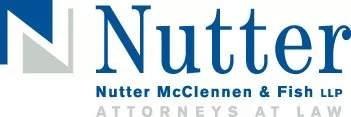Recently, the Federal Circuit again raised the bar for succeeding on claims of active inducement of infringement, holding that an alleged infringer's "good-faith belief of invalidity may negate the requisite intent for induced infringement." In doing so, it created an additional reason for companies to obtain opinions from counsel on the validity of competitors' patents.
In Commil USA, LLC v. CISCO Systems, Inc. (No. 2012-1042, June 25, 2013), the Federal Circuit vacated a $63 million jury verdict against CISCO based on a jury's finding of induced infringement. CISCO had appealed that verdict based on, among other things, the district court's preclusion of evidence related to CISCO's good-faith belief of invalidity. CISCO argued that such evidence was relevant to show that it lacked the requisite intent to induce others to infringe the patent-in-suit.
Active inducement liability is established by 35 U.S.C. § 271(b). That statute simply states: "Whoever actively induces infringement of a patent shall be held liable as an infringer." Most often, allegations of active inducement arise in the context of method and system patents. For example, companies who provide instructions to their customers on how to use a medical device or allow customers to download software to complete a computer system become the target of active inducement claims under § 271(b) even though they do not themselves perform the patented method or provide the patented system.
In 2011, in Global-Tech Appliances, Inc. v. SEB S.A., the Supreme Court held that a finding of active inducement requires knowledge that the induced acts constitute patent infringement. 131 S. Ct. 2060 (2011). That knowledge requirement can be met by a showing of either actual knowledge or willful blindness. Id. To thwart such a showing, an alleged infringer may present evidence of its good-faith belief of non-infringement. Courts historically have allowed such evidence because it tends to show that the alleged infringer did not have the requisite knowledge to be held liable for induced infringement. Prior to this week's ruling, however, the Federal Circuit had been silent as to whether evidence of a good-faith belief of invalidity may be offered by an alleged infringer. Writing for the majority, Judge Prost reasoned that there is "no principled distinction between a good-faith belief of invalidity and a good-faith belief of non-infringement for the purpose of whether a defendant possessed the specific intent to induce infringement of a patent." In dissent, Judge Newman disagreed, arguing that allowing evidence of a good-faith belief as to invalidity inappropriately collapses the infringement and validity analysis. Nevertheless, the current state of the law is that an alleged infringer may be able to escape a finding of infringement if it can show that it had a good-faith belief that the patent-in-suit is invalid.
As noted above, the Commil decision is likely to result in an increased demand for opinions of counsel concerning patent validity. Where previously the relevancy of such opinions was limited to the issue of willfulness and the imposition of multiple damages, opinions may be more valuable now than ever, especially with regard to method claims. Indeed, this week's ruling confirms that an invalidity opinion could be asserted to avoid a finding of infringement altogether for such claims.
This advisory is for information purposes only and should not be construed as legal advice on any specific facts or circumstances. Under the rules of the Supreme Judicial Court of Massachusetts, this material may be considered as advertising.
We operate a free-to-view policy, asking only that you register in order to read all of our content. Please login or register to view the rest of this article.



